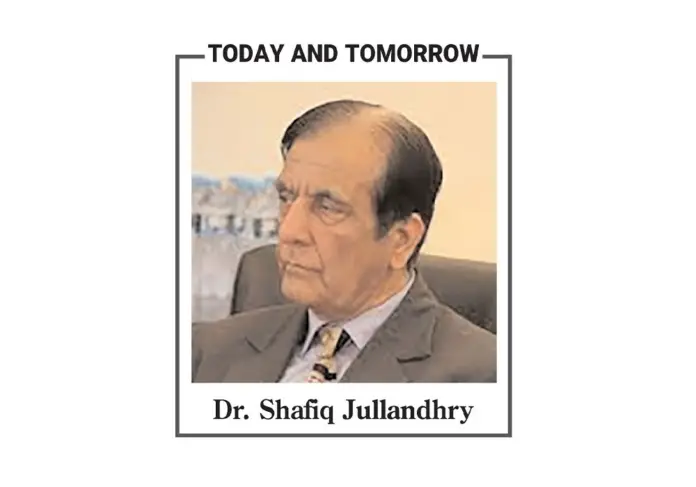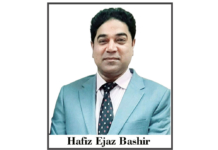Being a 75-year-old now, many alumni ask me to write about the Department of Journalism, the oldest professional institute in the Indian subcontinent, and now renamed ‘the School of Communication Studies’. The department was established in 1941 in the old campus of the Punjab University, Lahore, with a certificate program. After the independence in 1947, this certificate program was converted into a diploma in journalism. In 1959, Master (MA) in Journalism program was started on a trial basis, and the first batch of MA Journalism degree holders passed out in 1961.
Many persons got prominence in the field out of this first MA Journalism batch. Included in them were Dr. Miskeen Ali Hijazi, Zahid Malik, Wali Ahmed Khan, Naseem Ahmed, Khushnud Ahmed Qureshi, Shameem Rizvi, Mehboob Subhani, M. Arshad, Soofi Waqar, and Hafeezur Rehman. In the early days, Dr. Waheed Qureshi, CA Qadir, Hameed Nizami, and Murghoob Siddiqui also worked as the president of the department for different short periods. When I got admission into the MA Journalism in 1967, Dr. Abdul Salam Khursheed was the president of the department.
Other permanent teachers were Miskeen Hijazi, Waris Mir, Mehdi Hasan, and Mohyuddin Ahmed, visiting teachers there were Azizur Rehman, Hafeezur Rehman, and Akmal Aleemi. All the teachers were well-versed in their subjects, and visiting teachers were especially very senior and famous personalities in the field. Dr. Abdul Salam Khurshid was the only PhD teacher. He was the son of the prominent journalist, poet, and scholar of the subcontinent Maulana Abdul Majeed Salik. They worked in the Daily Zamindar newspaper of Maulana Zafar Ali Khan and then started his newspaper – Inqilab – in partnership with Maulana Ghulam Rasul Meher.
The department shifted from the old campus to the new campus in 1965. Here, the department got its premises in the present Department of Philosophy. During those days, Philosophy Department used to be on the last floor of the current Institute of Education and Research (IER). Dr. CA Qadir, head of the Philosophy Department, had excellent relations with Dr. Abdul Salam Khurshid. Dr. CA Qadir was suffering from some cardiac disease, and it was difficult for him to reach the third floor through stairs. After their mutual agreement, both the departments changed their premises, and the Department of Journalism reached the third floor of the IER building.
Dr. Abdul Salam Khurshid was an outstanding administrator and an excellent teacher too. He used to ride a bicycle for commuting between his home in Muslim Town and the new campus. He was always dressed in a suit. He was a very well-organized personality, never reached his office late, and never left it even a single minute earlier. He never missed his class. Journalism history was his favourite subject. He was always seen with a paper or card with points from the lecture to be delivered in style. There was always a tea break at 10.30 am. Teachers used to gather in the president’s room and gossip about the current affairs and learning-teaching activities. If any decision was taken in a faculty meeting, its minutes were immediately circulated among the teachers.
Dr. Khurshid believed in keeping records saved of every official business. If he got angry with any folly of a student, he wouldn’t let him go without submitting a written apology. He believed in having a distance between a teacher and his students. He thought that male students must observe the necessary distance between male and female students in our combined classes. Decency must prevail. If boys and girls involve together in discussions on academic and national affairs, it is good. If at the end of the session, it is learned that interaction between some boys and girls has emerged in the form of couples, that is fine. But there must not be one-way traffic; complaints from the girl side will be dealt with in heavy hands.
Dr. Khurshid authored early Urdu books on journalism. His Urdu book on the history of Indo-Pakistan journalism is an excellent contribution to the field. He also writes the first-ever Urdu book on professional techniques of journalism – Fun-e-Sahafat. There are some other Urdu books and booklets on the profession, among which ‘Karwan-e-Sahafat’ gained popularity among the journalism students.
More than seventy books were authored, compiled, or translated by him. Along with his books’ contribution, his columns in the most popular newspaper of that time, Daily Mashriq, also gained popularity. The column ‘Waqiat-e-Alam’ was on international affairs, and ‘Ifqar-o-Hawadis’ was the weekly column on general social issues. He always liked to write a simple and easy language with minimal sentences.
There were never any corrections or cuttings on his manuscripts. He was always on time in submitting his columns and articles. He wrote dozens of research papers and participated in many international conferences. In the last days of his service, he was able to purchase a small vehicle. He didn’t learn to drive. After buying the car, hiring a reliable and well-trained driver remained always a dominating problem in his life. He lived at House-1, Salik Street, Old Muslim Town, Lahore. His only son Nazrul Islam worked in journalism as the representative of the third generation of his family. It was according to the desire of Dr. Khurshid. He wanted to see his son as a journalist, and Nazar served the profession all of his life as a dedicated and honest journalist.







